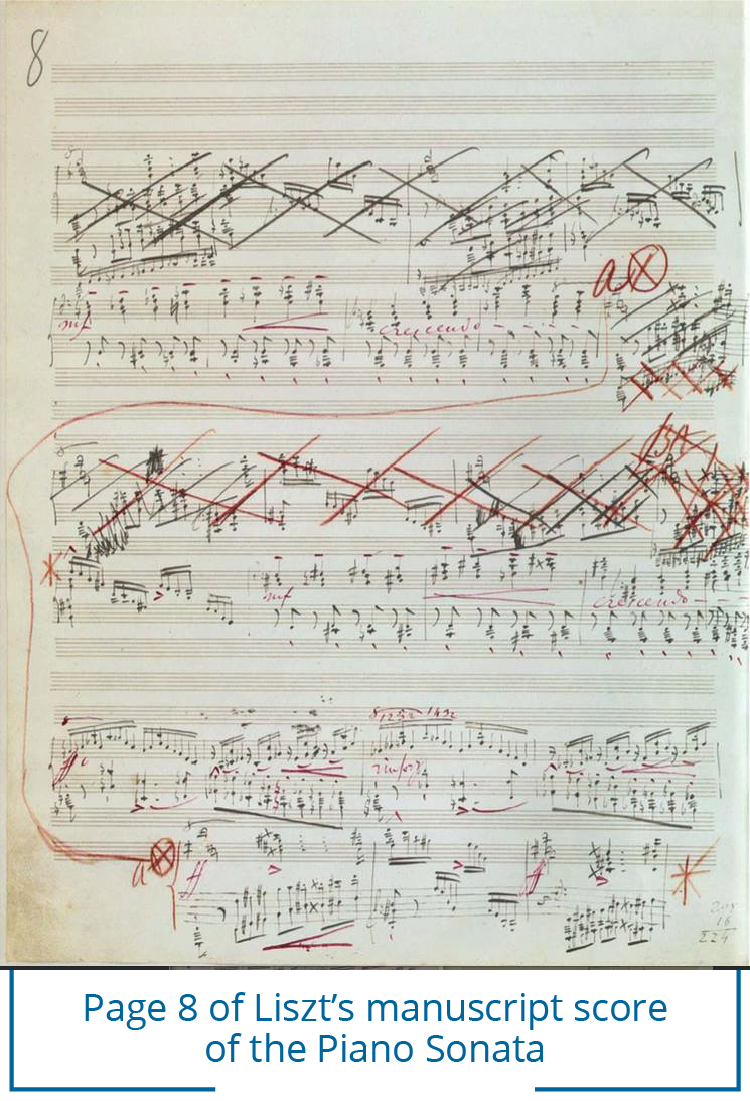SONATA IN B MINOR, S. 178
Franz Liszt
(b. Raiding/Doborján, Hungary, October 22, 1811; d. Bayreuth, Germany, July 31, 1886)
Composed 1852-3; 31 minutes

Few composers could better express the varied and often conflicting sides of their personalities in music than could Liszt. And nowhere does Liszt encapsulate this better than in the great Piano Sonata he completed in 1853. Alternately heroic and self-questioning, impetuous and disciplined, passionate and otherworldly, the sonata is one of the great works of 19th century romanticism. Setting aside the 1,300 other piano works he composed, if Liszt had written nothing else, his genius would be recognized based on this sonata alone.
Its immediate starting point is the Wanderer Fantasy by Schubert, a work that Liszt had recently arranged for piano and orchestra. From Schubert, Liszt took the idea of a single large-scale structure, with a unifying theme that recurs in different transformations. Liszt, however, goes much further. His Sonata can be broken down into the usual four movements, enclosed by a prologue and epilogue. But it also functions as a single, giant (30-minute) structure in traditional sonata-form. The first section, Allegro energico, is the exposition, itself in sonata form. In the second section, Andante sostenuto, the development begins, in ABA form. Then comes more development – a Fugato, in scherzo ABA form. And then the fourth section, Finale, the recapitulation, again in sonata form. There are other ways of analyzing the sonata. But its unity and the masterly way in which Liszt binds the varying moods of a large-scale sonata within a single framework are immediately apparent when listening.
Musicians were not always of this opinion. Schumann, to whom the Sonata is dedicated, never heard a note of it as he was already confined to an asylum by the time the sonata arrived at his residence. His wife, the virtuoso pianist Clara Wieck, thought it ’too awful’ and ’merely a blind noise.’ Brahms fell asleep when Liszt played the Sonata to him. Even 30 years after it was written, the renowned Viennese music critic Eduard Hanslick was overcome with ’irresistible hilarity’ when listening to the piece. It took Horowitz to bring the work to the attention of the concert-going public, back in the 1930s. Nowadays, most virtuoso pianists include it in their repertoire and few piano competitions take place without at least a handful of performances of the Liszt Sonata.